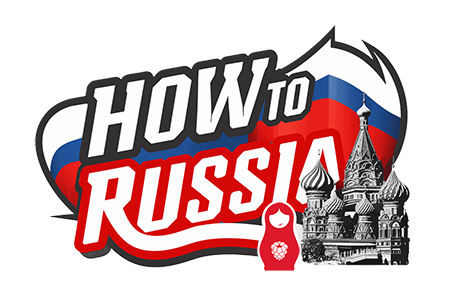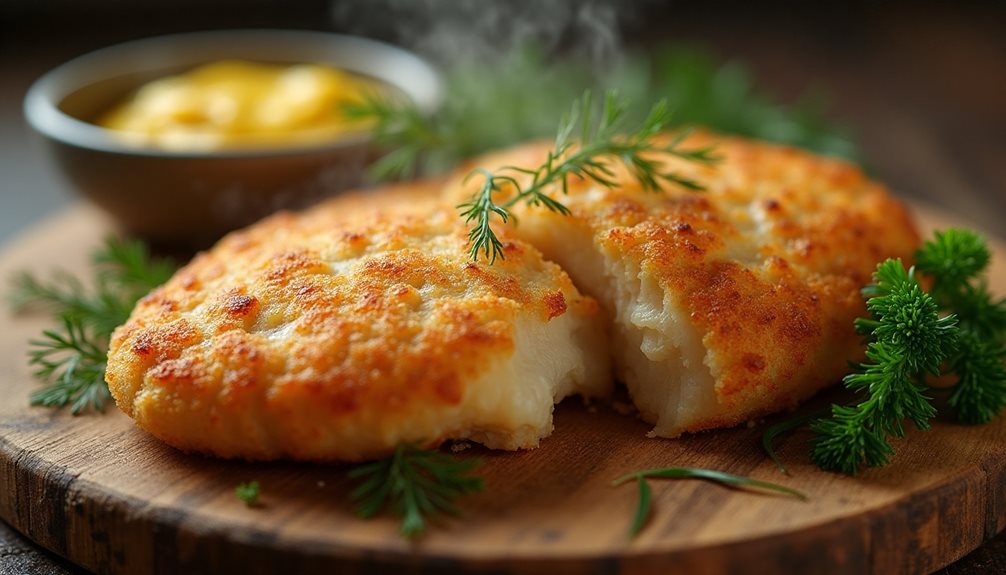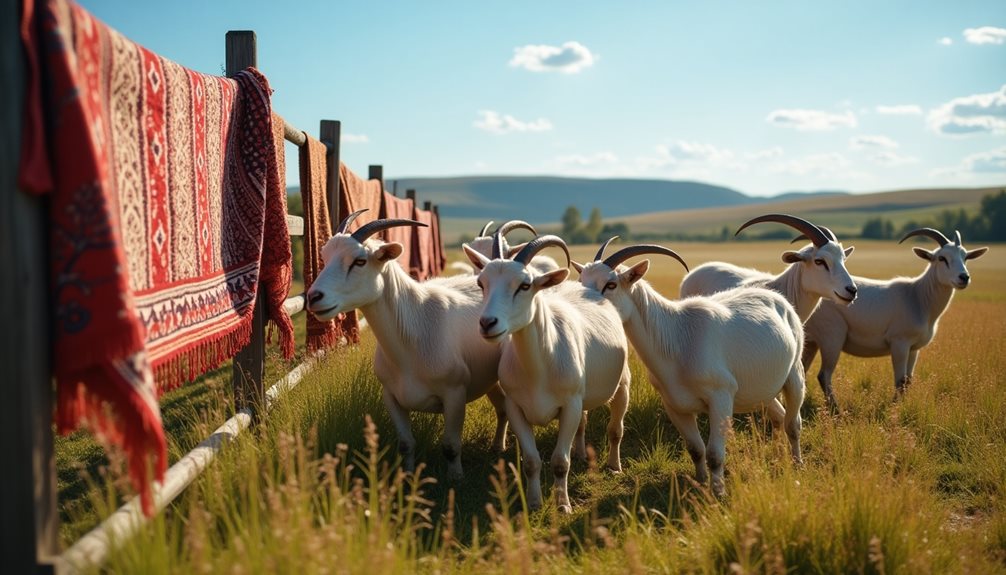Evolution of Hairstyles and Social Dynamics
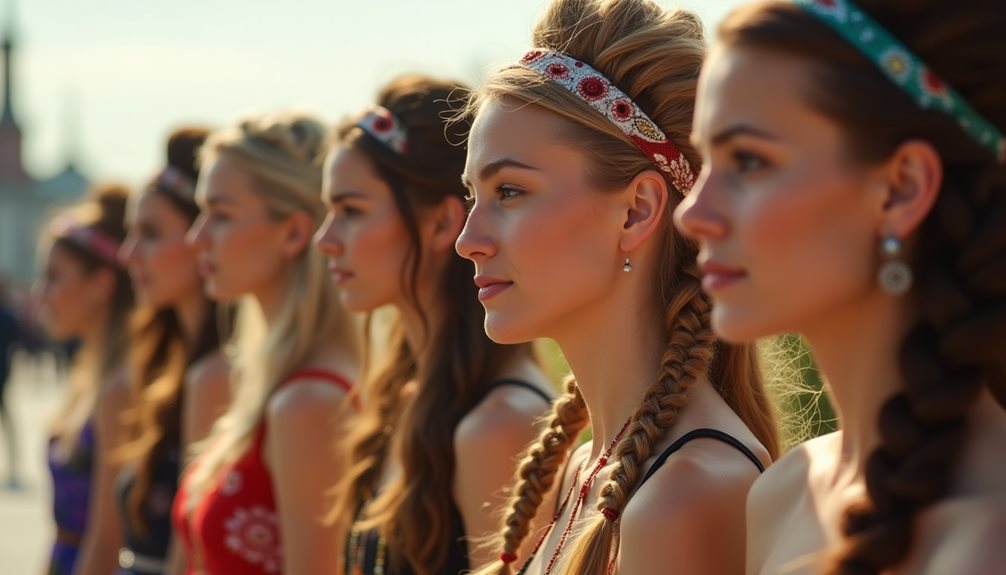
Throughout history, the evolution of hairstyles in Russia has mirrored significant social dynamics, revealing shifts in societal values and norms. From traditional styles that signify community ties to contemporary trends that embrace individuality, Russian hairstyles encapsulate the complexities of identity.
Cultural Fusion and Identity
Russia’s vast expanse has been shaped by numerous cultural influences and historical milestones, evident in its societal norms and personal expressions, such as hairstyles. The nation’s identity reflects a rich cultural fusion where Eastern and Western traditions intermingle. Historical milestones, like the rise and fall of empires, have influenced artistic expressions, showcasing the adaptability of Russian society.
Hairstyles in Russia serve as a medium for identity expression, intertwining personal narratives with traditional symbolism. Each style, whether modern or rooted in cultural continuity, encapsulates societal reflection, revealing shifts in values and norms. For instance, contemporary cuts can signify a departure from past constraints, while traditional styles may evoke nostalgia and pride.
Ancient Slavic Hairstyles
Emerging from ancient history, the hairstyles of early Slavic and Kievan Rus societies reveal a rich fabric of cultural significance and social structure. These ancient customs were not mere adornments; they embodied hair significance intertwined with Slavic identity. Distinct grooming rituals highlighted communal ties and individual roles, with styles reflecting social status and personal beliefs. Women often wore elaborate braids, symbolizing fertility and strength, while men sported practical cuts, indicating readiness for labor and defense.
Pagan Traditions and Hair Symbolism
The hairstyles of early Slavic societies were deeply intertwined with pagan traditions, reflecting a complex interplay between spirituality and identity. Hair rituals served as crucial expressions of Slavic symbolism, often linked to fertility, protection, and community cohesion. Traditional practices included braiding and adorning hair with natural elements, which underscored the cultural significance of hair as a medium of connection to the divine. Pagan influences shaped these customs, making hairstyles a canvas for storytelling and ancestral homage.
Christian Influence on Grooming Practices
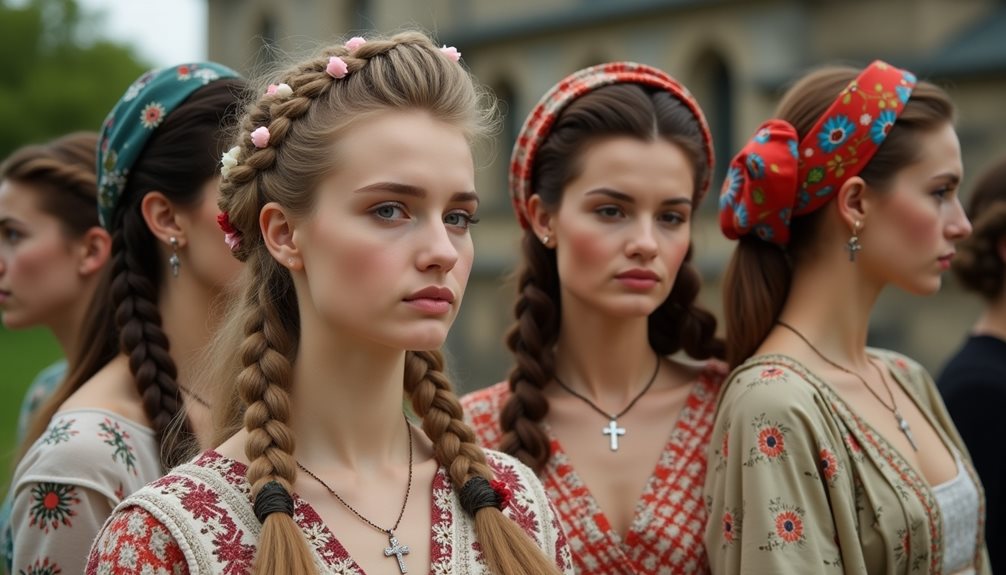
As Christianity spread throughout Eastern Europe, it markedly transformed grooming practices and personal appearance among the Slavic people. The Christian influence introduced new grooming norms that emphasized modesty and cleanliness, reshaping hair symbolism from pagan expressions of identity to religious representations. Hairstyles became linked with religious practices, with the faithful adopting styles that reflected piety and humility. This shift was pivotal in redefining cultural identity, as personal appearance began to signify adherence to Christian values.
Symbolism of Braids in Slavic Folklore
Braids and hair hold profound symbolism in Slavic folklore, often representing a connection between the physical and spiritual domains. Hair folklore reveals rich braid symbolism, where each twist and plait conveys aspects of cultural identity and women’s roles within traditional customs. In many communities, long hair signifies beauty and fertility, while braided styles reflect societal values, such as unity and protection. These customs not only preserve history but also empower individuals through self-expression. As a living narrative, the significance of hair transcends generations, embodying a collective memory that shapes the identity of the community and its beliefs.
Mongol Influence on Muscovite Russia
The Mongol invasion of the 13th century, while bringing significant upheaval to the territories of Rus, also set the stage for a complex interplay of change and continuity that shaped Muscovite Russia. This period saw cultural adaptation, altering social hierarchies while preserving Slavic traditions. Hair symbolism emerged as a powerful tool for identity formation, reflecting the blend of Mongolian and Russian customs.
Hairstyles became markers of status and allegiance, revealing the intricate negotiation of identity amid foreign dominance. Despite Mongol rule, Russian society underwent a transformative evolution, melding existing traditions with new influences. This resilience allowed the people to adapt their practices while retaining core elements of their cultural heritage.
Societal Shifts and Cultural Fusion
The Mongol influence introduced diverse practices that reshaped societal hierarchies, elevating certain groups while diminishing others. Trade routes fostered economic exchanges, leading to increased prosperity and interaction with distant lands. Religious transformations emerged as the Orthodox Church adapted to new realities, integrating aspects of Mongol spirituality. Agricultural practices also changed, with techniques and crops from the East enhancing productivity.
Women’s Hairstyles in Muscovite Russia
As the Muscovite period progressed, women’s hairstyles became significant reflections of societal norms and cultural influences. Muscovite fashion illustrated rigid gender roles and social hierarchies that dictated women’s lives. Elaborate hairstyles, adorned with veils and ornaments, symbolized status and wealth, demonstrating hair symbolism as a marker of identity. Cultural fusion with foreign influences introduced new styles, reshaping traditional aesthetics.
Women navigated this complex landscape of expression, using hairstyles as vessels of both conformity and subtle rebellion against societal constraints. This embodied the evolving nature of identity within Muscovite culture.
Braids: Symbols of Maidenhood and Family Honor
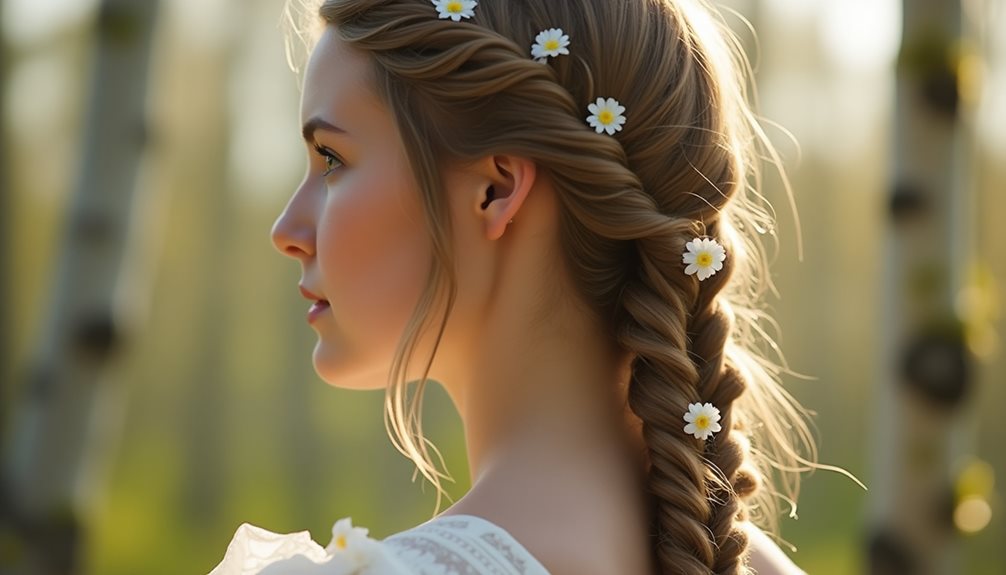
Within Muscovite fashion, braids emerged as powerful symbols of maidenhood and family honor. Braid symbolism resonated deeply, representing feminine strength and the continuity of family identity. Young women wore elaborate braids, signifying chastity and readiness for marriage, reflecting cultural heritage. These intricate styles showcased personal beauty and a woman’s connection to her lineage.
As braids wove through generations, they became representations of honor and respect, anchoring women in their historical narrative while celebrating their roles within the family structure.
Imperial Russia: Westernization and Fashion Evolution
The 18th century ushered in an era of profound change for Russia, with Western fashion becoming a pivotal force in reshaping societal norms and personal identity. Imperial fashion began to reflect Western influences, prompting a significant evolution in cultural identity. As Russian aristocrats adopted European styles, hair symbolism shifted dramatically, with elaborate hairstyles serving as markers of status and modernity.
This transformation illustrated a broader trend where personal appearance was intricately linked to societal expectations. The embrace of Western aesthetics not only altered fashion but also catalyzed a deeper exploration of Russian selfhood in an increasingly globalized context.
European Influence Under Peter the Great
The reign of Peter the Great marked a watershed moment in Russian history, characterized by sweeping reforms that sought to modernize the nation and align it more closely with European powers. His policies initiated a profound cultural exchange, introducing European influence into Russian society, particularly in fashion evolution.
Hairstyles transformed considerably, reflecting shifting social status and aspirations toward Western ideals. Nobility adopted elaborate European styles, abandoning traditional norms to demonstrate their newfound sophistication. This historical context reveals how Peter’s reforms not only altered aesthetics but also redefined identity, setting the stage for a complex dialogue between tradition and modernity.
Traditional Braids and New Trends
As new European hairstyles gained popularity in Russia, traditional braids persisted, creating a fascinating interplay between the old and the new. This coexistence reflects a cultural fusion where modern trends complement the rich fabric of Russian identity.
Traditional braids, laden with historical significance, continue to serve as a powerful medium for identity expression. Contemporary styles illustrate the evolution of hairstyles in a globalized world, allowing individuals to navigate their cultural heritage while embracing modern influences. This dynamic relationship showcases how tradition and innovation can coexist harmoniously in personal style.
Hairstyles: Markers of Social Status
At the heart of Russian society, hairstyles served as distinct markers of social status, delineating the opulent styles of the royal court from the practical choices of the peasantry. Court hairstyles, often elaborate and meticulously styled, symbolized wealth and power, reflecting the societal roles of nobility. In contrast, peasant styles embraced simplicity and functionality, prioritizing ease of maintenance over fashion.
These differences went beyond mere aesthetics; they embodied cultural symbolism, showcasing the stark divide between the elite and the common folk. Ultimately, hairstyles became visual representations of identity, illustrating the complexities of Russian social hierarchies and cultural evolution.
Elegance and practicality intertwine in the rich fabric of Russian folk traditions, particularly evident in the symbolism of the braid. This distinctive hairstyle serves as a powerful emblem of cultural identity, reflecting deep-rooted hair rituals passed through generations.
Each braid embodies folklore significance, often linked to fertility, beauty, and spiritual strength. Traditional techniques, meticulously crafted by skilled hands, transform simple strands into intricate designs that convey stories of heritage and community. As women adorned their hair with braids, they preserved ancestral ties while embracing change, allowing the braid to evolve as a symbol of resilience and continuity in Russian culture.
The Cultural Meaning of the Braid (Kosá)
The braid, known as kosá, holds profound cultural significance in Russian society, intertwining personal identity with communal heritage. Braid symbolism extends beyond mere aesthetics, representing feminine expression and cultural identity. Historically, the kosá served as a medium for hair rituals, marking stages in a woman’s life and reflecting societal values.
The intricate styles and meanings behind the braid underscore its role in shaping women’s identities, linking them to ancestral traditions. As Russia evolves, the braid remains a powerful emblem of resilience and continuity, embodying the intersection of historical significance and contemporary societal shifts within the domain of personal and cultural expression.
Hair Rituals in Weddings and Festivals
Hair plays a pivotal role in Russian weddings and festivals, serving as a canvas for cultural expression and personal transformation. Hair rituals reflect deeply rooted wedding customs, where intricate styles symbolize purity and familial lineage. Festival hairstyles often showcase vibrant colors and elaborate designs, embodying cultural identity and communal pride.
These practices transcend generations, as older women pass down techniques, reinforcing generational traditions. Through the art of hairstyling, individuals navigate rites of passage, marking changes with beauty and significance.
Soviet Era: Uniformity and Individuality
During the Soviet era, hairstyles became a canvas reflecting the tension between uniformity and individual expression. Soviet hairstyles often epitomized cultural uniformity, influenced by state ideology, yet they also sparked subtle forms of resistance. Individuals navigated this complex landscape through variations in their hairstyles—a rebellious braid or a daring cut—each choice laden with symbolism.
These acts of defiance highlighted the struggle for personal freedom amid prescribed norms. While many conformed to standardized styles, others embraced their uniqueness, crafting a narrative of resilience and transformation. This period illustrated that even in conformity, the spirit of individuality persisted.
Practicality and Standardization
As societal norms evolved, the drive for practical, standardized hairstyles emerged in response to the demands of daily life in the Soviet Union. Functionality took precedence over individual expression, leading to a culture of standardized grooming that catered to the needs of urban workers.
These practical hairstyles reflected a shift towards modern convenience, allowing individuals to manage their busy routines without the burden of elaborate styling. Beneath this practicality lay a complex interplay with cultural identity, as these standardized forms both unified and constrained personal expression, redefining belonging in a rapidly changing society.
Traditional Styles in Rural Areas
Despite the dominance of practical hairstyles in urban centers, traditional styles persisted in rural areas, reflecting a deeper connection to cultural heritage. These hairstyles served as symbols of rural identity, embodying values of cultural preservation and regional diversity. Passed down through generations, they reinforced familial bonds and communal ties.
Traditional hairstyles often showcased unique techniques and materials, highlighting the artistry of local practices. They not only preserved history but also asserted a sense of belonging in an ever-changing landscape, celebrating the essence of rural life.
Hair as Cultural Resistance
Hairstyles often carry deeper meanings, serving as subtle forms of cultural resistance. In Russia, hair becomes a canvas for personal expression, reflecting the complexities of cultural identity. Historical significance resonates through styles that challenge societal norms, embodying resistance against oppressive forces.
From traditional braids to modern cuts, each choice can symbolize defiance or unity, connecting individuals to their heritage while asserting their individuality. In contemporary relevance, these hairstyles evolve, fostering dialogue about freedom and identity, illustrating how something as personal as hair can serve as a potent statement against conformity.
Post-Soviet Revival
In the wake of the Soviet Union’s dissolution, Russian hairstyles have undergone a remarkable transformation, reflecting the nation’s shifting cultural landscape. Post-Soviet fashion has emerged as a canvas for exploring cultural identity, where modern styling often intertwines with hair symbolism. The revival of diverse hairstyles showcases an embrace of individuality, allowing personal expression to flourish.
This period marks a significant departure from past uniformity, as contemporary trends celebrate both innovation and heritage revival. As Russians navigate their new freedoms, hairstyles serve not only as aesthetic choices but also as powerful statements of identity and change.
Folk Traditions and Heritage Revival
The resurgence of folk traditions in Russian hairstyles highlights a profound reconnection with cultural roots. This heritage revival showcases the intricate interplay between folk art and contemporary expression, as traditional crafts are woven into modern aesthetics. By embracing these styles, individuals celebrate their cultural identity and foster community bonding through shared practices and narratives.
The re-emergence of these hairstyles serves as a canvas for storytelling, reflecting a collective desire to honor the past while traversing a dynamic present. Ultimately, this movement signifies a broader quest for authenticity and freedom in personal expression, rooted in rich cultural heritage.
Embracing the Future with Pride
As Russia continues to evolve, hairstyles remain a vibrant and dynamic expression of its rich cultural heritage. From the ancient braids of Slavic societies to the contemporary styles of today, each strand tells a story of resilience, adaptation, and individuality. The interplay of tradition and modernity in Russian hairstyles reflects the nation’s ability to honor its past while embracing the future.
The revival of folk traditions and the celebration of individual expression highlight a collective pride in Russian identity. As new generations explore and innovate, they carry forward the legacy of their ancestors, weaving a tapestry of cultural continuity and change. Through hairstyles, Russians affirm their unique identity, showcasing the beauty and strength of their diverse heritage.
In this ongoing narrative, hairstyles serve as a powerful medium for self-expression and cultural preservation. They embody the spirit of Russia—a nation that has continually adapted and thrived, blending the old with the new to create a vibrant and enduring cultural legacy. As Russia looks to the future, its hairstyles will continue to tell the story of a people proud of their heritage and eager to shape their destiny.
